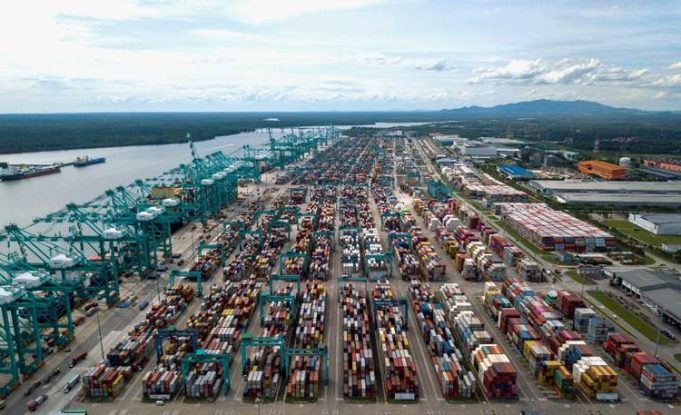By: Ahmad Ibrahim
APRIL 2, 2025 is a historic day for global commerce. The US, as promised, has just announced sweeping tariff hikes. No country is spared, including Malaysia. How such move will impact our export business will no doubt be up for debate. The question before everyone is, how such tariff measures will eventually play out. Will they bring back manufacturing to the US, as envisaged by the current administration? Or will it backfire on the US economy? The biggest fear is whether they will escalate in to a trade war, reminiscent of the 1930s?
Experts agree the current tariff wars and escalating trade tensions, particularly between the U.S., China, and the EU, have raised fears of a global recession, drawing comparisons to historical precedents like the 1930s Smoot-Hawley tariffs and the 1970s trade conflicts. Is today’s situation different? In the 1930s, what happened was that the U.S. imposed the Smoot-Hawley Tariff Act (1930), raising tariffs on over 20,000 imported goods. Other countries retaliated, and global trade collapsed by ~65%, worsening the Great Depression.
There are parallels today; rising U.S.-China tariffs, and EU-China trade disputes. Retaliatory measures include China’s export controls on rare earths, and EU tariffs on U.S. goods. Declining global trade growth is widely forecasted. The stagflation of the 1970s can be a lesson. The oil shocks, inflation, and trade barriers then led to stagflation. The U.S. and Europe imposed steel and auto tariffs, hurting growth. The parallels today include the inflationary pressures experienced from the supply chain disruptions (post-COVID, Ukraine war).
And industrial policies such as (U.S. CHIPS Act, EU Green Deal) led to subsidy wars. There are key differences today. It might not be as bad. Global supply chains are now more deeply integrated, unlike the 1930s, making a full-scale trade collapse less likely.
Furthermore, central banks are more experienced in managing inflation/recession risks, though tightening cycles still pose risks. Institutions like the WTO, though flawed but exist, can help mediate disputes.
Will it cause a global recession? Yes, if tariffs escalate further, supply chains fragment more , investor confidence collapses due to prolonged uncertainty. No, if negotiations prevail (e.g., U.S.-China talks resume),. And domestic demand stays strong. The risks are however real, but the world now is more resilient than in the 1930s. However, if tit-for-tat tariffs continue, we could see stagflationary pressures, slower growth, and financial instability, echoing past mistakes.
The U.S. tariff hikes, especially on Chinese goods, could have spillover effects on Malaysian exports, given Malaysia’s role in global supply chains. Here is how Malaysia might be impacted and what potential strategies are available to mitigate risks. Electronics & semiconductors (≈40% of Malaysia’s exports to the U.S.) may be negatively impacted. If the U.S. imposes higher tariffs on Chinese tech, Malaysia could face supply chain disruptions (e.g., chips, solar panels). But if China is forced
to divert exports, Malaysia may gain as an alternative manufacturing hub (e.g., Intel, Tesla expansions). U.S. tariffs on biodiesel or sustainable palm oil could hurt exports.
There are indirect risks via China. China is Malaysia’s top trading partner (≈18% of total trade). If China’s economy slows due to U.S. tariffs, Malaysia’s commodity exports (LNG, palm oil, natural rubber, metals) could weaken. Supply chain rerouting may happen. Some firms may shift from China to Malaysia (China+1 strategy), boosting FDI. Malaysia could respond in a number of ways. One is through trade diversification. Expand markets in ASEAN, India, Middle East (reduce reliance on U.S./China). Push for RCEP (Regional Comprehensive Economic Partnership) benefits, lower tariffs in Asia.
Need to attract high-value FDI. We should leverage neutrality in U.S.-China rift. Position Malaysia as a semiconductor & EV hub (e.g., Penang’s ‘Silicon Island’). Offer tax incentives for MNCs relocating from China (e.g., Tesla, Bosch investments). Also strengthen domestic industries by upgrading local suppliers to meet U.S./EU standards. Boost green exports including sustainable palm oil, and rare earth processing. Pursue diplomatic & trade negotiations with US. Lobby for exemptions (e.g., semiconductor parts may avoid tariffs). Accelerate FTA talks with U.S.
In a worst-case scenario, if U.S.-China tariffs escalate into a full-blown trade war, more MNCs may move production to Malaysia. But the risk is that a global demand slump would hurt exports, weaken ringgit, and raise inflation. Malaysia has options,
but must act fast. Malaysia is not as vulnerable as China-dependent economies, but it must diversify exports beyond electronics/palm oil, and capitalize on supply chain shifts (e.g., semiconductors, EVs). Avoid being caught in U.S.-China crossfire via smart trade diplomacy. Whatever it is, businesses will face more uncertainties, which is not good for the economy.

The writer is affiliated with the Tan Sri Omar Centre for STI Policy Studies at UCSI University and is an associate fellow at the Ungku Aziz Centre for Development Studies, Universiti Malaya

















